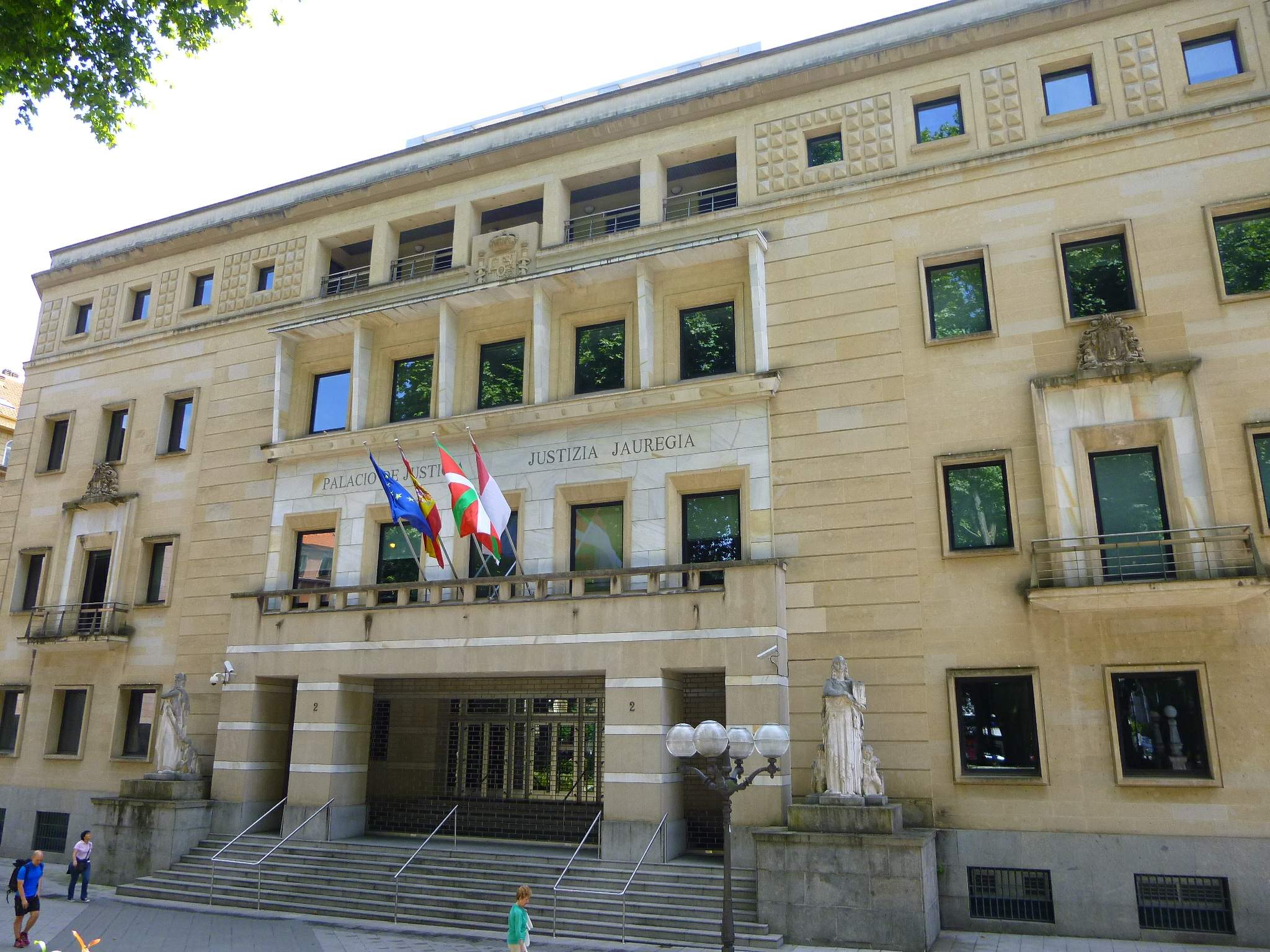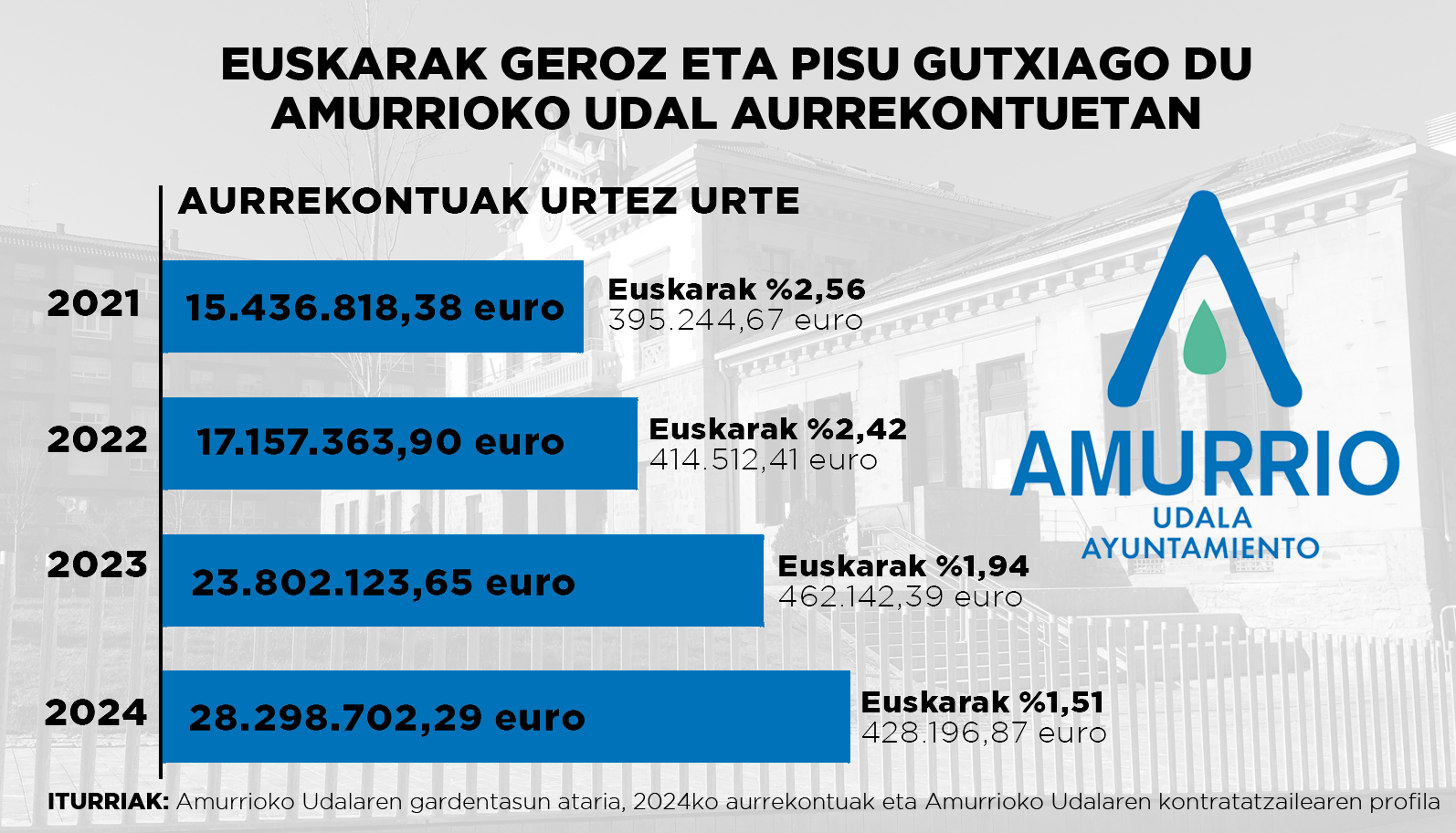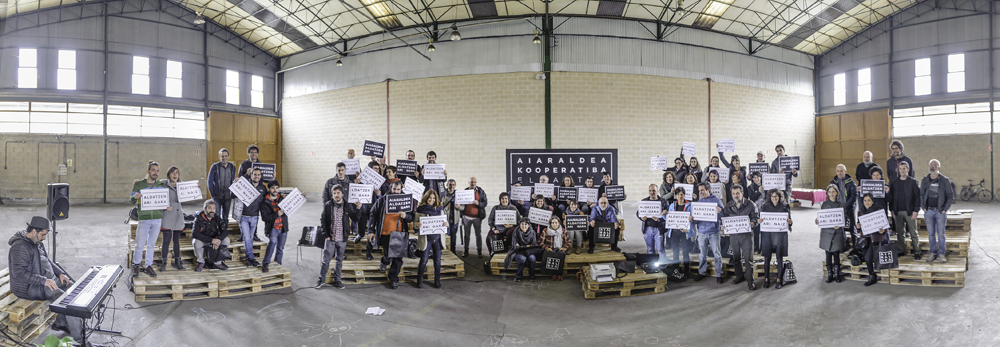"The hunger for works in our municipalities is not over"
- It is discrete, reasonable, prudent in a cement world dominated by noise. It has been devoted to mountains and forests, and it speaks with great sense of both nature and its city of tours. He's being humble and subtle in Álava, toponymy, Basque... Without reason of force, Ruiz Urrestarazu has the force of reason.

Iruñean bizi ziren guraso donostiarrak, eta Donostiara egin zuten, berariaz, lau seme-alabak jaiotzeko garaian: Manuel María, Mari Paz, Pablo eta Eugenio. Gure solaskideak Iruñean, Zaragozan eta, azkenaz beste, Madrilen egin zituen ikasketak. Mendi Ingeniaritza burutu eta Durangoko Baso-zentralean eta Bilboko La Papelera Españolan lan egin zuen. 1972an ezkondu, eta, ondoko urtean, Arabako Diputazioaren Mendi zerbitzuan zen lanean. Bertan sartu zen erretretan, ordurako zuzendari zela. Euskaltzain urgazle hautatua 1969an, ohorezko kide izendatu zuten 2014an. Naturaren baretasuna transmititzen duen laguna Ruiz, porlandia zail zakar honetan.
You were born in San Sebastian in 1941, but a month later you were in Pamplona.
It's the other way around, if you like, because your parents lived in Pamplona a year earlier. My father was working at a chemical company in management. However, both the father and the mother were Donostiarras, they were in close relationship with the people of San Sebastian, and they preferred to have children in San Sebastián, specifically. Thus we were born the four brothers in San Sebastian, although we lived in Pamplona. In my children, I was the first to come.
Were you raised in Basque?
No. At that time, in San Sebastian, in the private sphere, I would say that the Basque language was used according to knowledge and, in our case, it was not used, except for some expressions. However, I remember that in San Sebastian Street a grill was made in Euskera, although its formal use was prohibited. I remember that the mineral water Insalus, still in the 1960s, carried the Spanish flag on the bottles. And that in the telephony booths of Tolosa you could speak in Spanish, French, English or Italian, but not in Basque.
Not in Basque.
Euskera and politics formed silent music at that time. The popular atmosphere would also be so intense after the civil war and the harsh post-war period. I didn't realize much of those things. However, I have two very vivid reminders. One, my father told me ... During World War II, [Winston] Churchill said this in the French BBC broadcast: “Il faut nous livrer de la pestilence nazie” (We must get rid of Nazi pestilence). And the other, a few years later, what I heard -- I was in the hairdresser's room, and the paper brought an interview with Franco. In response to the journalist, Franco stated that Pierre Laval, former minister of the Government of Vichy who in 1945 went to Barcelona in search of refuge, voluntarily returned to France. Reading this, the hairdresser who was cutting my hair set on fire saying aloud, “This is the paroxysm of shame!” (This is a paroxysm of shame! ). I was shocked by their culture and, above all, their bravery. That's how the environment was, that it was bittersweet.
Born in San Sebastian, raised in Pamplona, studying in Zaragoza and Madrid…
Pamplona was from the university district of Zaragoza and I went to Zaragoza in 1958. Spend a year learning science and then college. I studied engineering programs and questioned whether I studied Agricultural Engineering or Montaña.Me liked more forests and forests than cultivation or growth, and I decided to do Forestry Engineering. So I could only study in Madrid, and I left there. The landscape of the wet Basque Country was the one I had wanted since I was a child and that of Zaragoza was arid. The one in Madrid, on the contrary, knew that it was not much better, but because it is a saudacia that is overcome and to Madrid!
What atmosphere was there among the students from Zaragoza? Would there have been a lot of Basques? The
truth is, I spent a short time enjoying the atmosphere around me. I got really stuck in the studio. I wanted to finish the course as soon as possible. But yes, there were Basques in Zaragoza. Among them was Xabier Arzalluz. Vitorian Alberto Sarazibar, who would then be my doctor. However, I will tell you one of the most pleasant memories of Zaragoza: to listen in the spring to the song of the bird Upupa epops, of the rooster of light, opening the class window.
.jpg)
"If we compare Pamplona with Vitoria, the presence of the Basque in Vitoria today is greater than in Pamplona, and fifty years ago it was the other way round"
He studied Ingeniería de Montes in Madrid, and also studied in Basque, with the grammar of Andoni Urrestarazu Umandi… Yes.
In the final courses of the course you are quieter and have more time to take forward other themes you like. In my case, the Basque Country was waiting. I heard the Basque, since I was a child, and I was very close, but I didn't take myself inside, because I didn't know Euskera. And I didn't want to live with that shortage. So, once I bought Umandi's grammar at the Espasa Calpe bookstore, located in the Gran Vía de Madrid, and I started learning page by page. On the other hand, in Madrid there was a group of Basque students with whom I contacted. We began to organize Mass in Euskera in the residence of students Juan XXIII, where many of them lived. There we were, for example, Manuel Odriozola Lesaka and José Antonio Retolaza, creator of Kili kili magazine. Manuel Odriozola taught classes in Euskera, intercalating songs. It was nice moments, we were able to get to know each other and talk.
That's where he got a PhD. You had a thesis about Basque toponymy (Tree forest species in Basque toponymy).
I finished my studies in 1965 and, as for the PhD, two Edaphology professors in Madrid put the intention to me, but not in Madrid, but in Arrasate: They were Antonio Nicolas Isasa and José Manuel Gandullo. They came to Euskal Herria to study the relationships between Pinus radiata and the earth. I had old friends trees and names, and I thought finding them in toponymy was an interesting and attractive option. This is how the thesis emerged. The correct allocation of tree names is always appropriate, and making dark or blurred names clearer is always a pleasant task.
He did his studies in 1965. In 1968 I was in
Vitoria… Yes, after studying, I was offered a job in Madrid, but I wanted here. In Laboral Kutxa [Caja Laboral Popular, then] I found work to help in advising agricultural cooperatives. In 1960, the parents rented the restaurant El Portalon and the whole family came to Vitoria. I made those from Madrid and I came here, to my parents' house.
The first ikastola in Vitoria-Gasteiz is December 1963. From that fire came a group that held meetings in January-February 1968 in the monastery of Alentbaliz. His name is recorded in the minutes of one of those meetings.
Every Sunday we met with the P. Isidor Baztarrika Munduate, the Prior. He was a welcoming and attractive man and monaco. Our goal was to organize masses and Euskera classes throughout Álava, and the most appropriate place for it was Estibaliz. The police had political suspicions about these meetings and in the newspapers erroneous information was revealed, aloud, about those quiet and friendly meetings, and at last the meetings. Each of them would work separately.
Isidor, or Isidro, Baztarrika. I have only to know from that expert...
I'll tell you. That year, in the fall, was the Euskaltzaindia Congress in Arantzazu, the union of the Basque Country. We went together Father Baztarrika and I. We went every day. I was going to Alentbaliz, I was taking Aita Isidor, and Arantzazu. At dusk, home. I had a friend of heart and a pain, and I have it inside of me. He also baptized our three daughters in Stybaliz.
Was there an Basque atmosphere in the 1960s and 70s in Álava?Except for Aramaio, part of
Legutiano and some speakers from the Gorbeia area, the Basque was practically lost in Álava. I remember that in Entzia, in 1964, a chabola was called “la txabola del vasco” (the Basque chabola), because there was a Basque pastor there. In Vitoria, on the contrary, the Basque country is scarce, at least if it is not a weekend. At the end of the week, Aramaio, Legutiano, Otxandio, Ubide and, above all, those who came from shopping from the Deba basin to Vitoria used to breathe in the atmosphere, albeit for a few hours. It has no current similarities. The change has been very noticeable, both in Vitoria and in Álava. For example, if we compare Pamplona with Vitoria, the presence of the Basque in Vitoria today is greater than in Pamplona, and fifty years ago it was the other way round.
In 1969 he was appointed a corresponding member of the Academy...
While working in Mondragon and Durango, and in part in Vitoria, I went deeper into the Basque world, and so I woven relationships with a good number of workers from the Basque culture. The truth is that in 1969 Euskaltzaindia wanted to extend its initiative to all territories and to this end he set up delegations in all capitals. In Álava, Fr. Baztarrika was a corresponding member of the Academy of the Basque Language, and last year he proposed two people who went to these meetings of Stimubaliz to be appointed accordingly and to strengthen the representation of Álava. Aita Baztarrika reportedly gave the names of Peli Martin Latorre and the two. And that's what I do in Euskaltzaindia.
Despite the Basque Language Academy, you've always been a mountain engineer. You have a very special job: 52 indigenous species and a dozen exotic plants, some of them from Himalayas, were listed by the magnificent Arraia–Maeztu Rear Canyon.
As you know, the old town of Igoroin was inside a basin. The hillsides of the basin were provided with small oak leaves under the sun: Quercus faginea and Acer opalus. In the shaded area, covered by beech: Fagus sylvatica. These red leaf earrings are profiled in autumn with beautiful pink colors. The narrow valley of the interior of Igoroin was filled with old orchards of the old apple. And in these little orchards, an arboretum was prepared with different species, in which the Himalayan beets and cedars were planted, among others. So we made that catalog. However, later, in other Alavese departments, and on a larger scale, we also perform species sessions, whether in Armentia, Albinagoia, Arrategi along with Herrera, Montoria, Labastida, Basauri de Okendo, Artxanda de Amurrio, Izúzquiza de Gamboa… in different places!
Armentia, Albingoia, Arrategi, Basauri, Artxanda... Toponymy of Álava of the Basque Country.
Toponymy shows us that Álava was Euskaldun. There are the two names of the capital, the two Basques: the first, Gasteiz; the second, Vitoria, the 12th century Victory, which became Vitoria from the beginning in the pronunciation of the Basques... If we look at the small toponymy, the Navarre romance erupted in the southeast and in the southwest Castilian, but most of the Alavese territory is plagued by Basque toponymy.
.jpg)
"Landscape and human beings are inseparable. The landscape is part of our house. Our spacious house. The famous landscape film ‘Metropolis’ is suffocating to us.”
I have read to you on one occasion that the Alavesa toponymy also shows us some dialects...
Yes. The Alavese dialect, the Alavés, has a marked Navarre and Guipuzkoan character in the east. To the west, like the Biscayan, but always with its own old nuances or vestiges. José Luis Lizundia said that Basque toponyms are repeated by meridians. And it's true, at least in general. This is the case of Larrea, both in Barrundia and in Amorebieta; Hermua, both in Barrundia and in Ermua de Bizkaia; Ibiña, both in Gamboa, Zigoitia and Vitoria-Gasteiz, and even Ibiñaga, in Ibarrangelu; both in Zuia and Mendialdea and in Bizkaia. The case of the word ibiña is curious: In Ullíbarri-Gamboa, in a 16th-century document there is the toponym Errekaibiña, which seems to be that we have a Hydronima ibiña and which, if necessary, is the western variant of the ford. Further west, in Arrato, we have the toponym of Ubiñarrate, where the ibina has been performed, ibiña and ubiña, in the style of the Orozko binomy and the rectal.
What relationship do forest forests and human beings have in general?Landscape
and human beings are inseparable. The landscape is part of our house. Our spacious house. The famous Metropolis landscape film is suffocating to us, for example. The landscapes of nature are necessary for the misconception of the human being, there is no choice but to take care of them and organize them well to keep our house and ourselves healthy. Today, I believe that the main problem is urbanism in urban and industrial areas. The development of nature outside urbanism will depend on climate and farms, but today the situation is sustainable. Another thing is what happens in cities.
What do we have in cities?
& '97; Because of the continuous works carried out in the municipalities! The hunger for works in our municipalities is not over. It breaks and opens, hits, unsatiated. In all cities, and especially in the big cities. People's peace of mind is not respected. Cities seem to be for works and not for cities, that is, for their occupants, they are becoming more and more uncomfortable. The city is not for me, it is not for everyone. Another hard problem, today, is noise. In recent years, the spread of noise has become widespread. Noise in homes, shops, hotels, hospitals, anywhere. Because the “ambient music” of bars or taverns is yellow! This is the antinomy: the environment and music. What's more, in most cases that music doesn't deserve that name. Municipal licenses for the opening of terraces, regardless of the resident population in the area. The use of mobiles, particularly in public transport, is unsustainable. I see less and less empathy in society.
The economy has long survived ecology… But it is essential
to take care of nature, it is our house! Both ecology and economics have the resources to care for the home. There is an increasing awareness that nature must be cared for, but in the urban or urban realm, in the empathy that we owe to the other, we are sewing.
Gasteizko 1 zenbakiko Auzitegi Kontentzioso-Administratiboak emandako epaia berretsi du EAEko Justizia Auzitegi Nagusiak. Lan poltsan parte hartzeko euskara maila altuenaren baliokide diren 3. eta 4. eskakizunak indargabetu zituen Gasteizko Auzitegiak.
“Izaskun Arrueren urratsen atzetik” liburua idatzi du Miel Anjel Elustondok. Azken hamarkadetan Gasteizen eta Araban euskararen bilakaera eta Ikastolen sorrera nolakoa izan zen aztertu du. Izaskun Arrue Arabako Ikastoletako “lehen andereñoa” izan... [+]





















